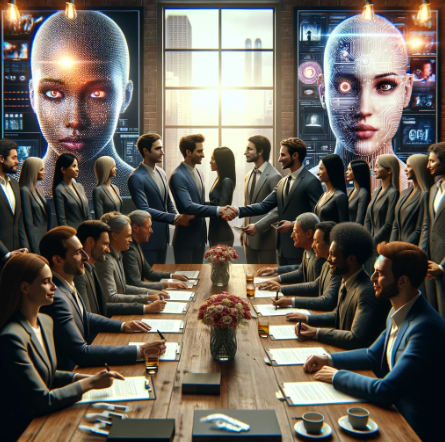Hollywood Agreement: AI Protections for Actors

November 14, 2023
After 118 days of strike, the longest in Hollywood history, the Screen Actors Guild-American Federation of Television and Radio Artists (SAG-AFTRA) has reached an agreement with the Alliance of Motion Picture and Television Producers (AMPTP). Both parties remained silent about the terms of the agreement on Wednesday night, but it was reached after a lengthy struggle over the use of artificial intelligence in actors’ performances and actors’ demands for residual payments for shows and films streamed on streaming services.
A Historic Agreement for Hollywood
A SAG committee, representing thousands of film and television actors, approved the agreement on Wednesday. The strike itself, which saw pickets in front of Netflix, Disney, Warner Bros. Discovery, and others’ offices, will end on Thursday morning. The provisional agreement is expected to be submitted to the union’s national board for approval on Friday.
Undoubtedly, this is a significant milestone for Hollywood, an industry worth over $130 billion that has been nearly completely halted this year, as both the Writers Guild of America and SAG have stood firm to secure fair wages and limit the use of artificial intelligence in their work.
WGA members went on strike in May, while SAG abstained from work in July, marking the first time the industry faced a dual strike since 1960. The WGA strike ended in September with a historic agreement that established guidelines to protect screenwriters from the incursion of artificial intelligence into their work.
During this year’s negotiations between SAG and AMPTP, generative artificial intelligence became the primary point of contention. In July, the film studios claimed to have offered an “innovative proposal on artificial intelligence that protects actors” digital likenesses. SAG countered that the proposal allowed background actors to be scanned, paid for the day, and then transformed into digital characters that studios could use “for the rest of eternity” (AMPTP contested this claim).
The issue was discussed at length until last weekend when SAG reviewed the studios “last, best, and final” offer and rejected it, stating that “there are several key points on which we do not yet have an agreement, including artificial intelligence.”
A subsequent article in The Hollywood Reporter revealed that the AMPTP’s proposal sought to allow studios to pay for AI scans of what are known as Schedule F performers and, after the actors’ death, allow studios to use the scans without the consent of the estate or SAG. Schedule F performers include anyone earning more than the minimum wage for TV or film actors. The union wanted compensation for the reuse of scans, along with consent.
On Tuesday, the studios reportedly agreed to modify the language on artificial intelligence in their proposal, a move that appears to have been decisive. Although the terms of the provisional agreement reached on Thursday are not clear, it is challenging to imagine that actors have not obtained at least some of the AI-related protections they were seeking.
The evolution of artificial intelligence in the conversation
Since actors began their strike in July, the conversation about artificial intelligence has shifted from a living room topic to an international issue. Last week, U.S. President Joe Biden signed a broad decree aimed at limiting the power of commercial artificial intelligence.
The decree did not address the effects of machine learning on Hollywood, but SAG took advantage of the announcement, stating on X that “for strong, safe, and responsible development and use of artificial intelligence, it is imperative that workers and unions remain at the forefront of policy development.”
The main issue for both writers and actors who confronted during the summer (which extended into the fall) was that it was becoming impossible for union members to “maintain a middle-class lifestyle,” as stated on the SAG website.
Part of this calculation, of course, involves ensuring that jobs are not replaced by artificial intelligence, but also that members receive residual payments for streaming content that match what they would earn if a TV show were broadcast on a network. “They have a 2023 business model for streaming with a 1970 business model for paying actors, writers, and other industry creatives,” said Duncan Crabtree-Ireland, executive director and chief negotiator of SAG-AFTRA, in June. “This is not acceptable.“








